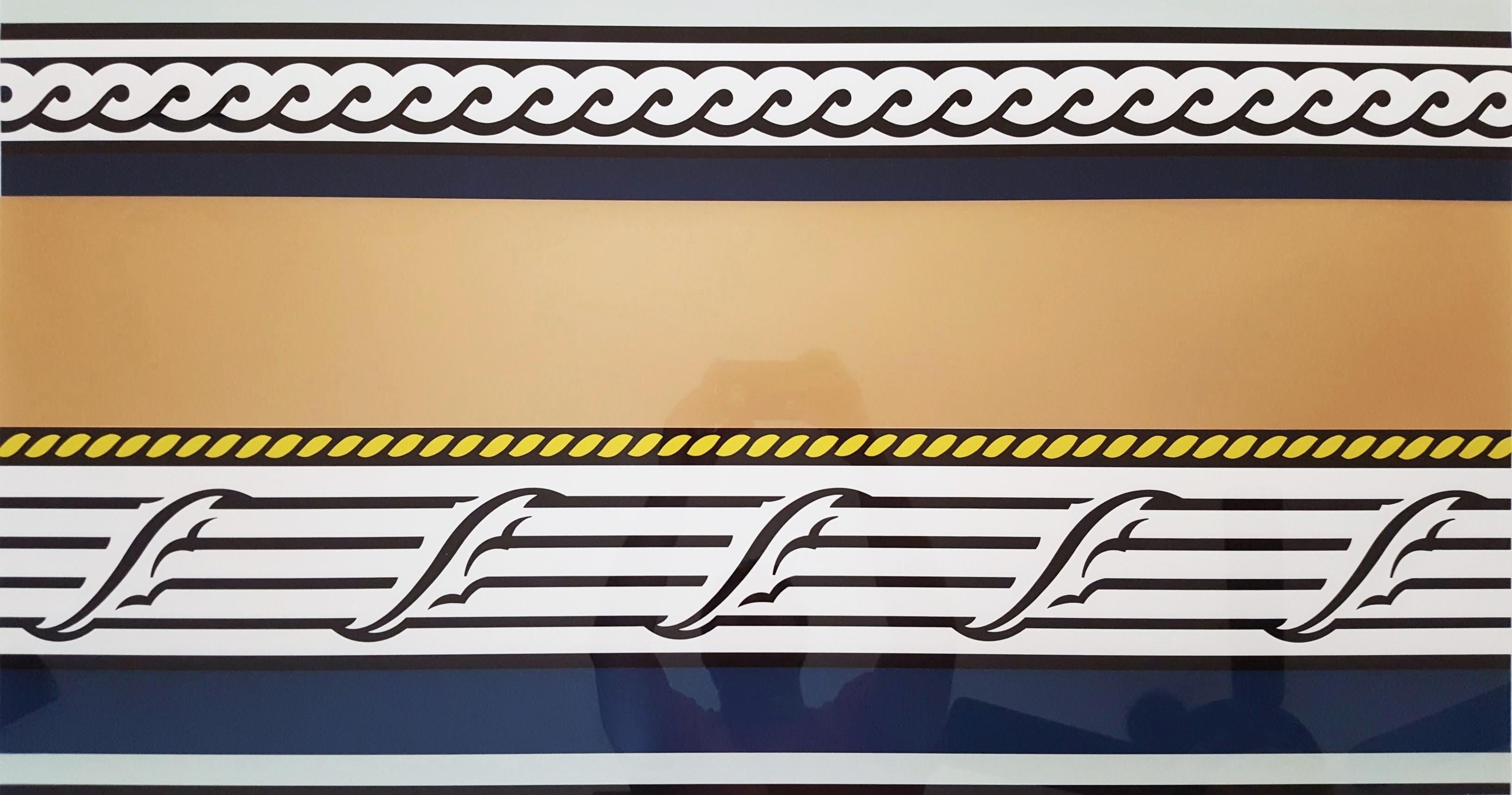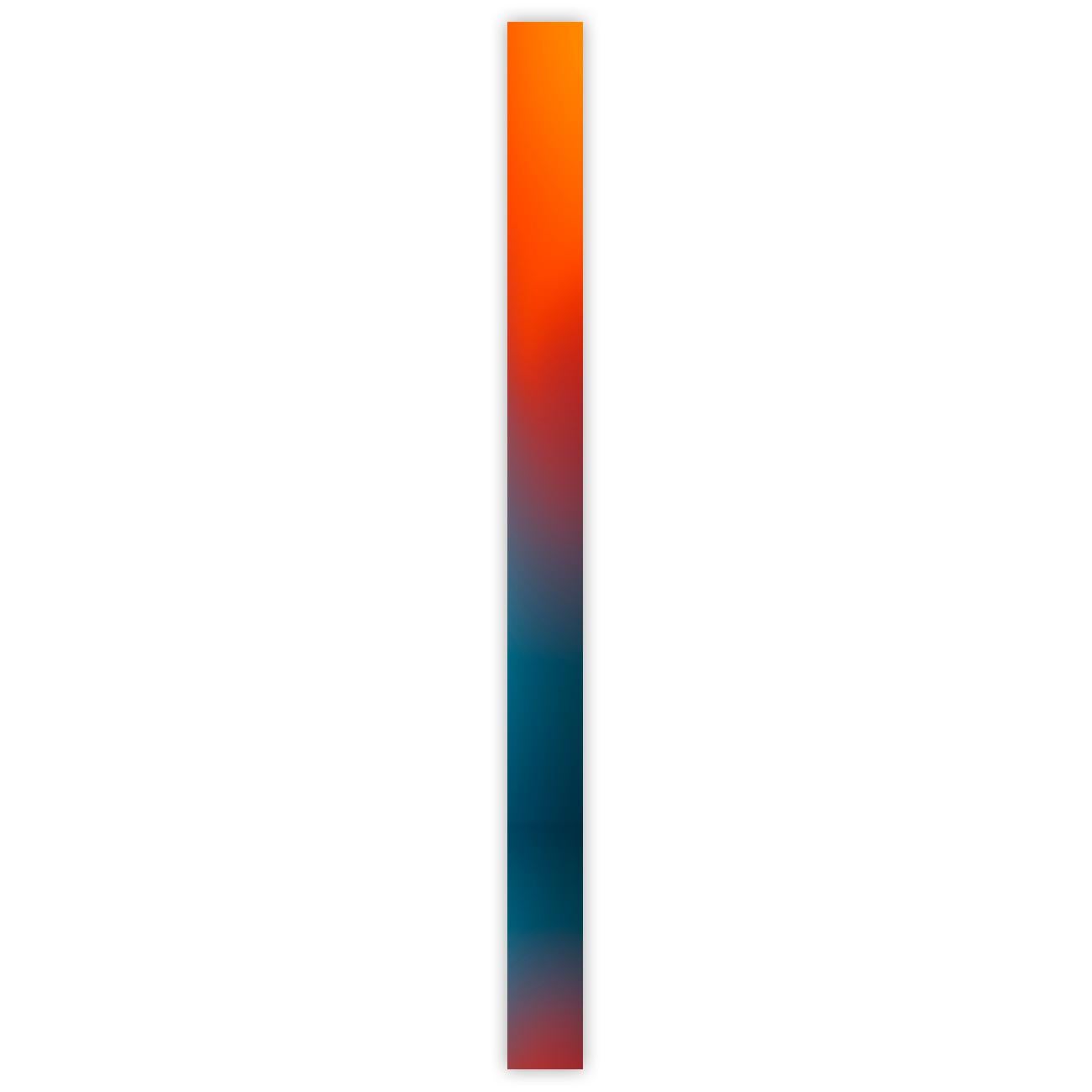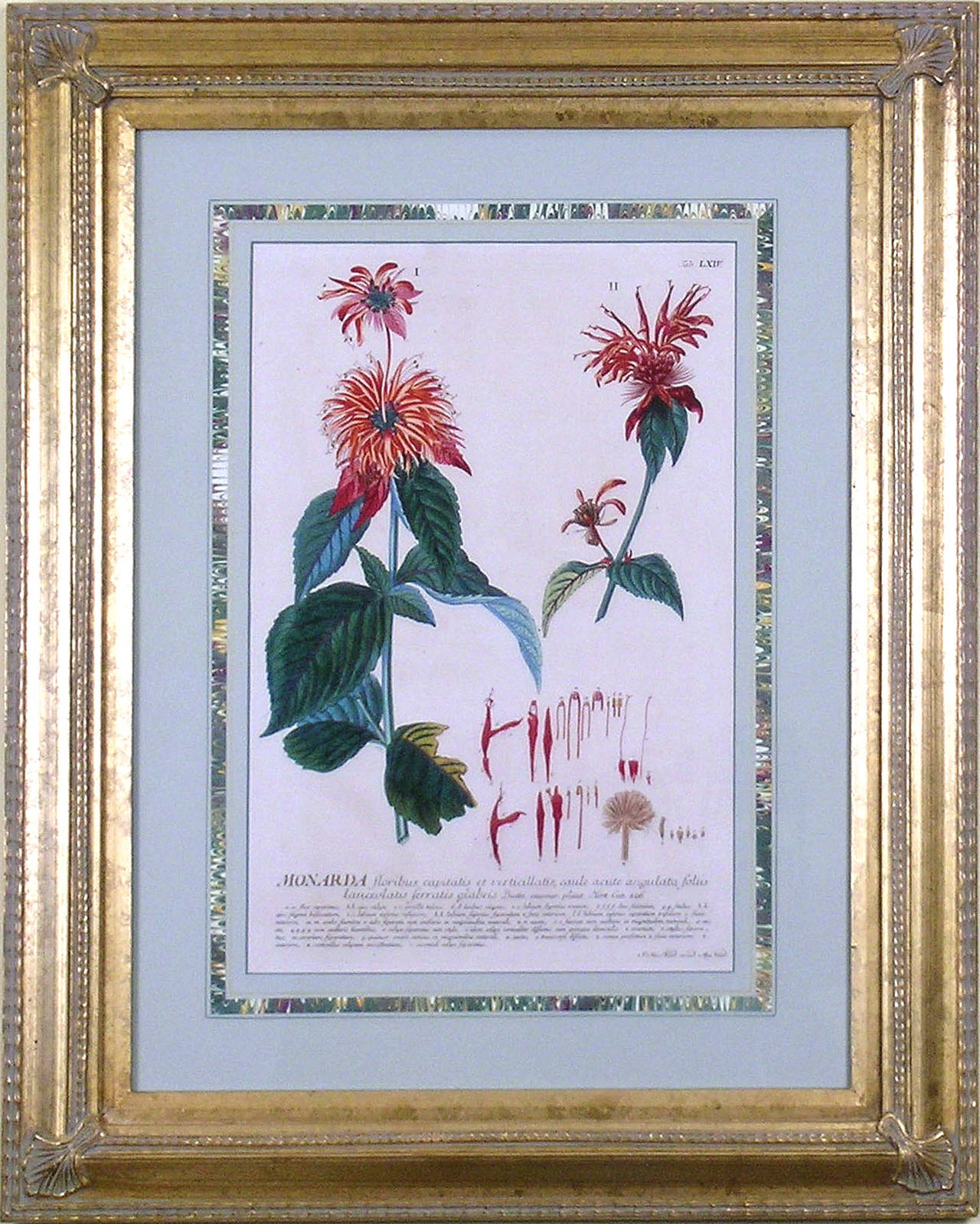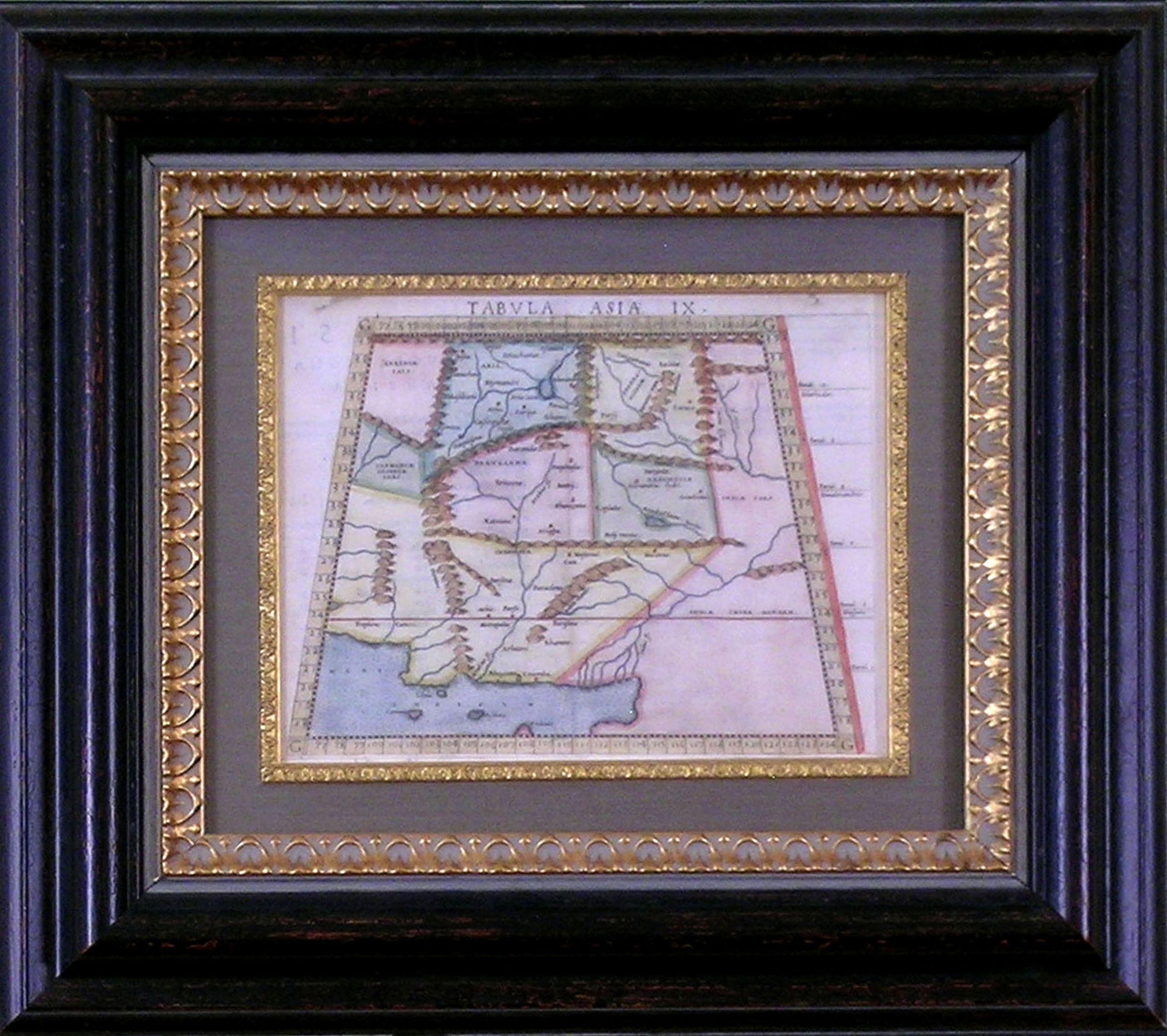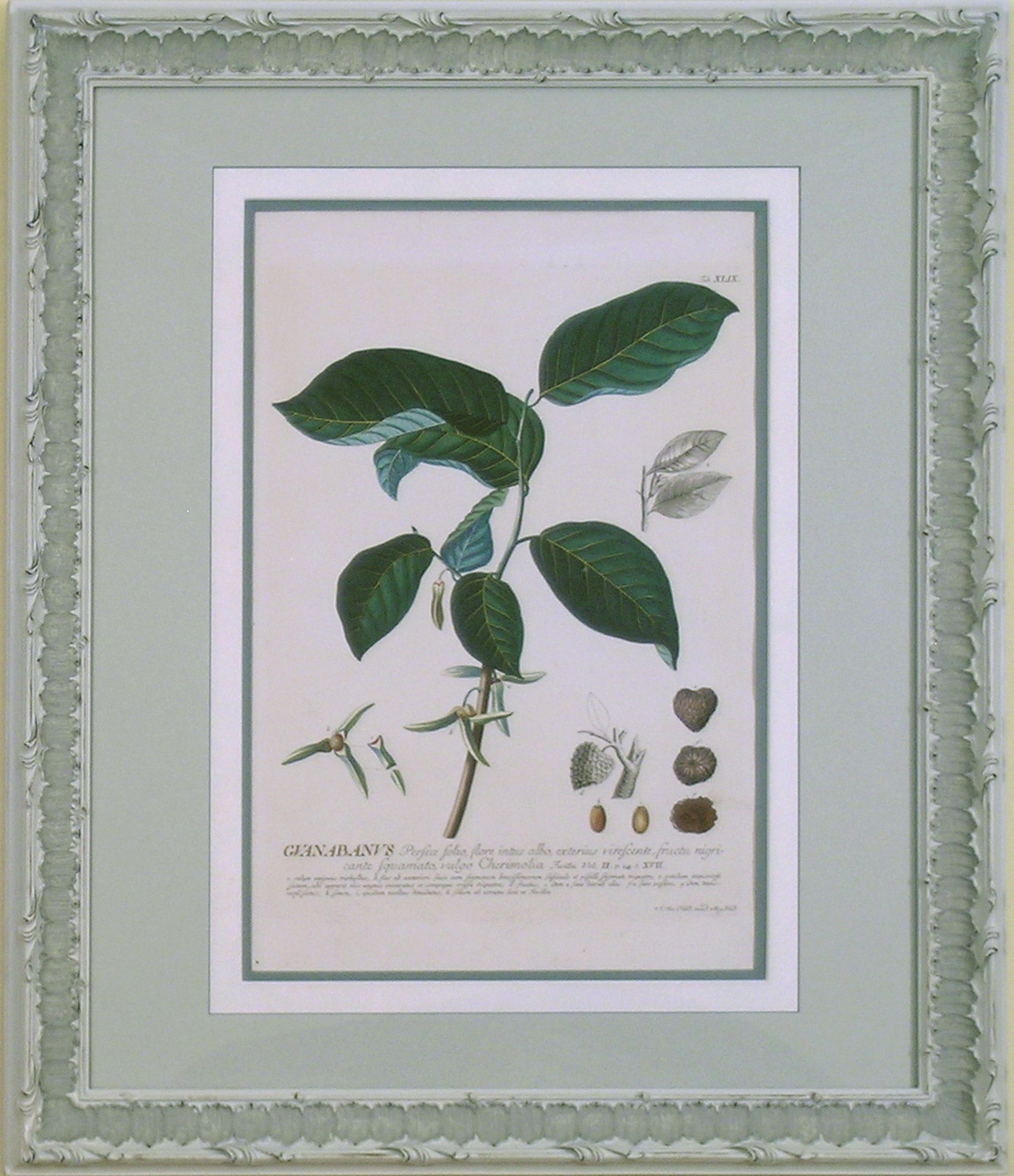Jesús Rafael SotoOvalo en el Rojo Edition 78/1101979
1979
About the Item
- Creator:Jesús Rafael Soto (1923 - 2005)
- Creation Year:1979
- Dimensions:Height: 15 in (38.1 cm)Width: 15 in (38.1 cm)Depth: 5 in (12.7 cm)
- Medium:
- Period:
- Condition:
- Gallery Location:Miami, FL
- Reference Number:1stDibs: LU154127957212
Jesús Rafael Soto
Venezuelan Op and kinetic painter and sculptor Jesús Rafael Soto (1923–2007) is perhaps best known for his immersive installations, which respond to their environments and physically absorb the viewer in a dynamic sensory experience.
The exploration of space is central to Soto’s work. This is evident in his early paintings, of the 1950s, which create the illusion of movement through simple compositions and a limited palette. During the same period, he integrated industrial materials like nylon and steel into linear constructions that were part painting, part sculpture.
But Rafael Soto’s grandest and most enigmatic creations are his “Pénétrables.” Made up of thousands of long clear or colored plastic strands suspended from the ceiling or from free-standing steel or PVC frames, these geometric sculptures play with the perception of space, inviting viewers to act as participants by moving within and through them.
The strips of some of the installations were partly painted, forming shapes when seen from a distance. The Houston Penetrable (2014), at the Museum of Fine Arts, Houston, for instance, appears to hold a floating yellow ellipse.
Rafael Soto created 25 “Pénétrables” over the course of his career. Each further blurred the line between reality and illusion and established viewers as not just spectators but as integral parts of the artwork itself.
Shop Jesús Rafael Soto's art now at 1stDibs.
- ShippingRetrieving quote...Ships From: Miami, FL
- Return PolicyA return for this item may be initiated within 14 days of delivery.
- HannoverBy Jesús Rafael SotoLocated in Miami, FLJesus Rafael Soto "Hannover" 1970 Color silkscreen on transparent plexiglass panel, metal rods on nylon threads. It has the original box. 7 x 21 x 5 in Ed. 170 of 200 Provenance: Va...Category
1970s Kinetic Abstract Sculptures
MaterialsMetal
- La Escalera Azul, de la serie SintesisBy Jesús Rafael SotoLocated in Miami, FLLa Escalera Azul, de la serie Sintesis 1979 Plexiglas and metal Ed 37 of 110 20 x 14 x 5 in Literature: Museo Guggenheim Bilbao. “Soto. The Fourth dimension”. Catalogue published on...Category
1970s Op Art Abstract Sculptures
MaterialsMetal
- Three element transchromeLocated in Miami, FLCarlos Cruz Diez Three element transchrome 2011 Plexiglass Sculpture Editions La Difference Paris 49 of 75 21 x 5 x 5 in Signed, dated, and numbered at the publisher label at the bot...Category
21st Century and Contemporary Kinetic Abstract Sculptures
MaterialsPlexiglass
- HexagoneLocated in Miami, FLVictor Vasarely (9 April 1906 – 15 March 1997), was a Hungarian-French artist, who is widely accepted as a grandfather and leader of the Op art movement. In 1928, he enrolled at Sán...Category
1980s Op Art Abstract Sculptures
MaterialsPlexiglass
- Physichromie No. 1354”Located in Miami, FLCarlos Cruz Diez (1923-2019) “Physichromie No. 1354” 2002 Plastic inserts and digital print on cardboard Ed. 2/3 11 7/8 x 12 in Provenance: Galerie Mark Hachem, Paris. Private Colle...Category
Early 2000s Kinetic Abstract Sculptures
MaterialsPlastic, Cardboard, Digital
- Aura Alpha ClockBy Victor VasarelyLocated in Miami, FLVictor Vasarely "Aura Alpha Clock" 1988 Screenprint on acrylic and Lucite clock Ed 28 of 500 12 x 9 x 3 in Working clock. It requires an AA battery.Category
1980s Kinetic Abstract Sculptures
MaterialsLucite, Acrylic Polymer, Lithograph
- Entablature IV /// Pop Art Roy Lichtenstein Large Design Architecture PatternBy Roy LichtensteinLocated in Saint Augustine, FLArtist: Roy Lichtenstein (American, 1923-1997) Title: "Entablature IV" Portfolio: Entablature Series *Signed and dated by Lichtenstein in pencil lower right Year: 1976 Medium: Original Screenprint and Collaged mat pink Metallic Foil with Embossing on Rives BFK paper Limited edition: 14/30, (there were also 9 artist's proofs) Printer: Tyler Graphics Ltd., Bedford Village, NY Publisher: Tyler Graphics Ltd., Bedford Village, NY Reference: "The Prints of Roy Lichtenstein: A Catalogue Raisonné 1948-1997" - Corlett No. 141, page 144; PCN 7 (July-August 1976); "Tyler Graphics Catalogue Raisonné 1974-1985" - Tyler No. 337:RL5, page 210 Framing: Framed in a contemporary white moulding with plexiglass and matted with a custom hand-wrapped 8 ply linen mat Framed size: 39.5" x 55" Sheet size: 29.19" x 44.82" Image size: 20.19" x 38" Condition: Some light cosmetic wear to frame; presently no hanging wire. The artwork is in mint condition Very rare Notes: Provenance: private company collection - Miami, FL, acquired directly from the publisher Tyler Graphics Ltd., Bedford Village, NY in the 1970's. Numbered by Lichtenstein in pencil lower left. Comes from Lichtenstein's 1976 "Entablature Series" portfolio of 11 prints, (Corlett No. 138-148). Printed in six colors, in seven runs, from five screens, and one embossing plate. Collaboration: Kenneth Tyler (project supervision, plate/screen preparation, proofing, collage, and embossing); Kim Halliday (screen preparation and processing, proofing, and edition printing); Betty Fiske (proofing and edition printing). Swan Engraving processed the magnesium plate. Tyler Graphics Ltd. chop mark/blind stamp lower right. Workshop number inscribed in pencil lower left on verso: "RL75-197". Comes with its original Tyler Graphics "Entablature Series" booklet. Between 1971 and 1976 Lichtenstein produced two series of "Entablature" paintings, using photographs of architectural ornament he had taken in New York as the starting point for his compositions (see Cowart [1981]). The first "Entablature" paintings (1971-72) were black and white. The second group used color and were produced at roughly the same time the "Entablature" series of prints were in production at Tyler Graphics Ltd., 1974-76. The first discussions between Lichtenstein and Ken Tyler concerning the "Entablature" prints took place in May, 1974. As recorded in the Tyler catalogue raisonne, technical research for the project began in September 1974 and production was completed in April 1976. Lichtenstein produced one or more collages for each print in the series to serve as models for the plates and screens. Both the "Entablature" paintings and prints are intimately concerned with texture - the metallic paint and sand of the paintings, the foils and embossing/debossing techniques employed in the prints. The imagery itself - machined architectural ornament - takes technology as its subject. As Barbara Rose suggests, "That industrialism disrupted our notion of style as much as reproduction altered our conception of representation appears to be the subjects of Lichtenstein's "Entablatures". For each print in this series, the Tyler Graphics Ltd. catalogue raisonne gives exact method and press types, as well as the initials of the printers for each run. To complete certain phases of the project, Tyler employed the following companies: Drake Engineering, Danbury, CT (for machining of the metal die); Swan Engraving, Bridgeport, CT (for plate processing); Tallix Foundry, Beacon, NY (for bronze casting); and Tompkins Tooling, Gardena, CA (for machining of the metal die). The ten embossing plates for the series are now in the collection of the National Gallery, Canberra, Australia. Biography: American artist Roy Lichtenstein was born in New York City on October 27, 1923, and grew up on Manhattan's Upper West Side. In the 1960s, Lichtenstein became a leading figure of the new Pop Art movement. Inspired by advertisements and comic strips, Lichtenstein's bright, graphic works parodied American popular culture and the art world itself. He died in New York City on September 29, 1997. Lichtenstein was committed to his art until the end of his life, often spending at least 10 hours a day in his studio. His work was acquired by major museum collections around the world, and he received numerous honorary degrees and awards, including the National Medal of Arts in 1995. In 2013 the painting "Woman with Flowered Hat" set another record at $56.1 million as it was purchased by British jeweler Laurence Graff from American investor Ronald O. Perelman. This was topped in November of 2015 by the sale of "Nurse" for 95.4 million dollars at Christie's auction. Subsequently, that was topped with the private sale of his 1962 painting...Category
1970s Pop Art Abstract Prints
MaterialsMetal, Foil
- Flux # 202320 (Abstract photography)By Paul SnellLocated in London, GBFlux # 202301 (Abstract photography) Chromogenic Print Face-mounted 3mm Matte Plexiglas, backed with extruded polystyrene, concrete, acrylic, enamel and pigments Backed with Dibond ...Category
2010s Abstract Abstract Prints
MaterialsConcrete, Enamel
- Monarda (aka Bee Balm, Bergamot)By Georg Dionysius EhretLocated in Florham Park, NJGEORGE DIONSYSIUS EHRET (1708-1770). Plantae Selectae.... Text by Dr. Christoph Trew. Drawn by Georg Dionsysius Ehret. Engraved by Johannes Jacobus and Johannes Elias Haid. Nure...Category
18th Century and Earlier Academic Prints and Multiples
MaterialsGold Leaf
- Map Tabula Asiae IX Pakistan Afghanistan Iran Indian OceanLocated in Florham Park, NJ“Tabula Asiae IX Pakistan, Afghanistan, E. Iran” Girolamo Ruscelli (1504 – 1566) Venice, 1561 V. Valgrisi. publisher Copper Engraving with Later Hand-Color Born in Viterbo, Italy, Ruscelli was an Italian polymath, humanist, editor, and cartographer active in Venice during the early 16th century. He is well known for his exacting revision of Ptolemy's Geographia. He was influenced by the 1548 Gastaldi edition. The work was illustrated with 64 double page engraved maps. Twenty-seven were Ptolemaic and thirty-seven were considered “modern maps”. These showed early glimpses of North and South America...Category
16th Century Realist Prints and Multiples
MaterialsCopper
- Guanabanus (Guabana or Soursop Fruit)By Georg Dionysius EhretLocated in Florham Park, NJGEORGE DIONSYSIUS EHRET (1708-1770). Plantae Selectae.... Text by Dr. Christoph Trew. Drawn by Georg Dionsysius Ehret. Engraved by Johannes Jacobus and Johannes Elias Haid. Nuremberg, 1750-73. Hand-colored engravings. Titles highlighted with goldleaf. 100 plates. 19.5” x 13.5” Unframed. A supplement of 20 plates issued by B.C. Vogel in 1790. "The dominant influence in botanical art during the middle years of the 18th century." "One of the finest records of cultivated flowers..." "His accuracy and general excellence as a true botanical artist have never been equaled." Ehret’s praises have been sung throughout the centuries. While his training was in gardening, Ehret's true talents were in his art. Drawing the specimens from life in the garden's in which he labored won Ehret his employer's praise and his co-workers jealousy. Not only were his botanical portraits highly accurate in every technical detail, they reflected an awe-inspiring love of subject. A restless man, Ehret wandered from Heidelberg through Germany to Vienna and Basle, working his way to Paris and finally settling in London. He was honored by peers and patrons wherever he traveled. Ehret's list of benefactors include the most brilliant and generous members of society in his day. However, it was Christoph Trew, a wealthy physician, lifelong supporter and friend, who published the work for which Ehret is best known, Plantae Selectae. Ehret went to Leiden to meet Carolus Linnaeus and they became the best of friends. It is the Linnaen classification of plants to which Ehret subscribed. In distinguishing of the sexual systems of plants and the cross-sectioning of specimens, based on the teachings of Linnaeus, Ehret's illustrations have become the standard followed by horticulturists throughout the centuries. Ehret is the only foreigner to be elected a Fellow of the Royal Society in England. The illustrations for Plantae Selectae were printed in black and white and painstaking colored by hand at the time of publication. The color is superb! All of the initial words of the titles were gilded; a glorious tribute to an achievement of excellence. Various scholars at the time of publication praised the book highly, singling out the excellent quality of Ehret's watercolor studies, as well as Haid's fidelity to them. In a letter to Linnaeus in the 1750's, Dr. Trew called the book "one of the miracles of our century in the natural sciences." In the 1960's, Claus Nissen wrote "the Plantae Selectae became the most beautiful German plant...Category
1750s Academic Prints and Multiples
MaterialsGold Leaf
- Urtica (Nettle)By Georg Dionysius EhretLocated in Florham Park, NJGEORGE DIONSYSIUS EHRET (1708-1770). Plantae Selectae.... Text by Dr. Christoph Trew. Drawn by Georg Dionsysius Ehret. Engraved by Johannes Jacobus and Johannes Elias Haid. Nuremberg...Category
1750s Academic Prints and Multiples
MaterialsGold Leaf
